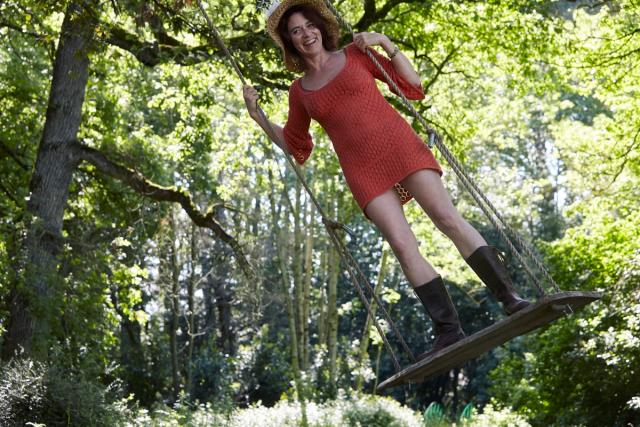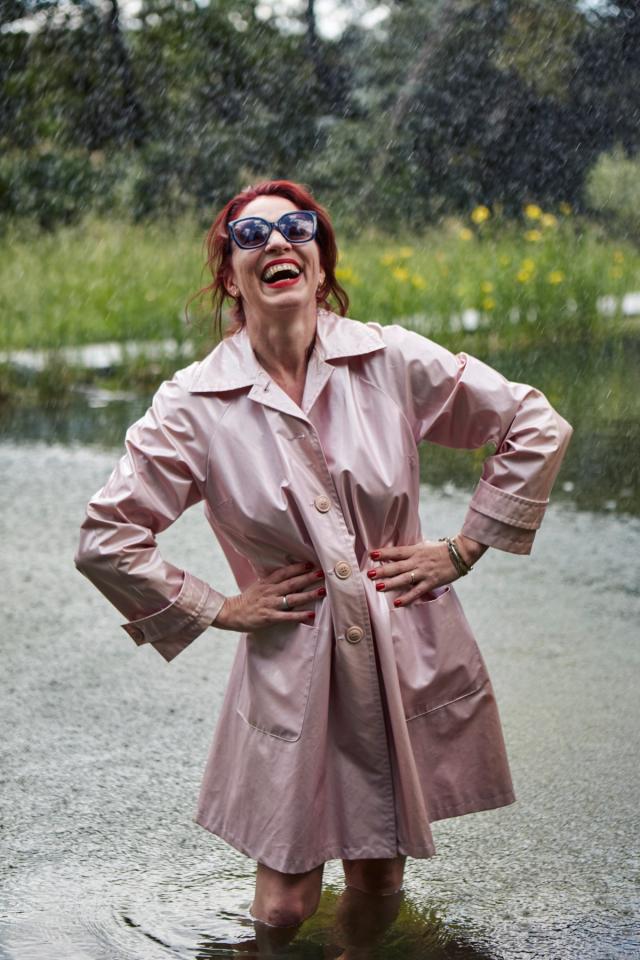

Ruby may describe a shade of red wine. Those born in July get to claim the bold, fiery gem as a birthstone. The mere mention of ruby may summon childhood nostalgia for the sparkly slippers worn by Dorothy on her journey to Oz. But as a given name, Ruby hints of vivaciousness, vibrancy, and a visionary spirit–a fitting eponym for Ruby Platts-Mills. The London native is one half of the duo behind La Belle Eco, a sustainable sanctuary in southern France, which she and her husband, Dimitri, brought to life.
Raised amid the color and charm of Portobello Road by a filmmaker father devoted to community and the arts, Ruby’s love of vivid hues and storytelling took root early. Her eclectic career spans production, comedy, teaching, and sustainability—including six years co-writing and co-producing the Portobello Panto, a long-running Notting Hill Christmas tradition. “Though panto is for pantomime, there’s nothing pantomime about it,” she says of the glittery, color-rich festival. After a decade in stand-up, she left London’s most prismatic street for Andalusia’s vibrant shores. There, she taught English for seven years, reconnected with her now husband, and together they launched a sustainable resort.
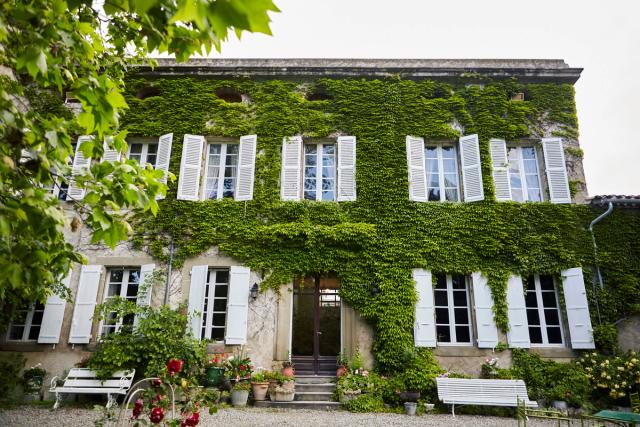
The first step? Three years of globe-trotting research, from planting trees for orangutans in Borneo, to cycling between Cambodia and Vietnam, to bamboo building in Bali with stops in Australia, New Zealand, Oman, and Mexico, along the way. They eventually settled on the woodsy outlying environs of Carcassonne in southwest France for their resort—a midpoint between their base in Barcelona, her native UK, and Greece, Dimitri’s motherland. They enrolled in a permaculture course, and the vision began to unfold.
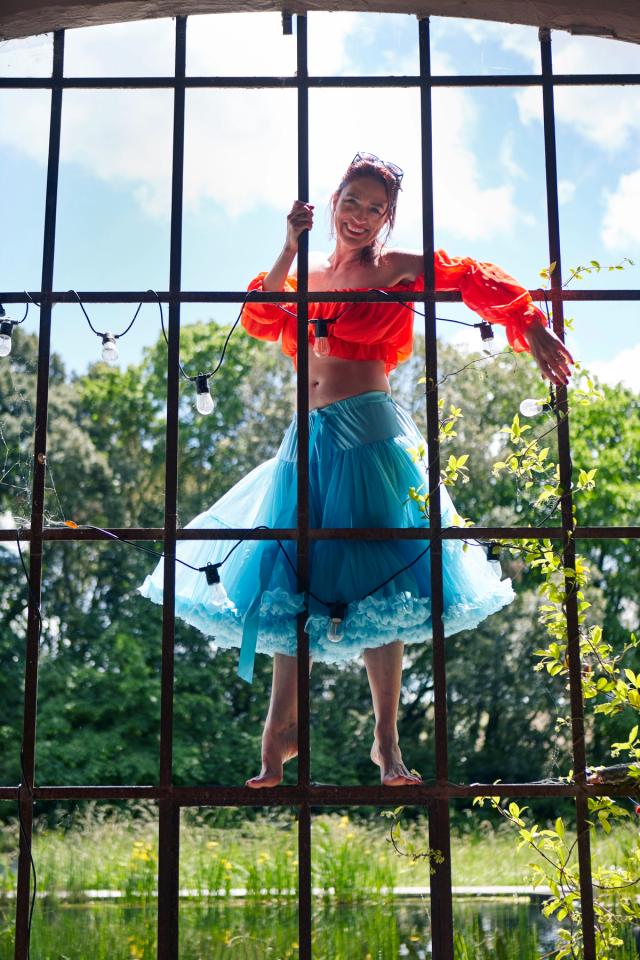
“I saw the house and completely fell in love,” reflects Ruby. The 19th-century home was the third and final property they viewed, but she knew it was the one before ever ever seeing it in person.
“It’s been our inspiration–it’s green and forested,” she gushes about the unspoiled 10-acre grounds. “The second you walk through the door, you see the secret garden, and I swear my heartbeat immediately starts to slow down. It still does.”
As the pandemic put the world on pause, the couple found themselves under lockdown in Thailand for several months. Ruby couldn’t stop dreaming of the house. She’d watched the listing video so frequently, Dimitri worried the rising view count would exaggerate the property’s popularity. They immediately returned when restrictions lifted and made an offer. By 2021, the property was theirs.

Ruby’s first move was to convert the pool from chlorinated to natural water. “It invites life. Once, as I was coming out of the water, a bird landed to drink from it,” she reminisces. “Dragonflies dance above with iridescent wings—it’s a heavenly place.”

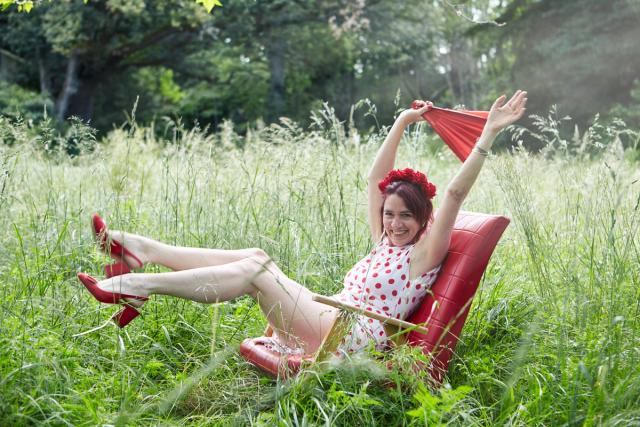
A similarly heavenly feeling permeates La Belle Eco’s interiors. The 14 rooms, each with its own name and color, and furnished with one-of-a-kind antiques, were designed to feel more like a home than a hotel—Ruby spent hours in each one, quietly sensing its mood.
She fondly refers to Flora as the “Van Gogh room” for its cheerful yellow cherry blossom wallpaper and the warm glow that evokes his Sunflowers. In contrast, the Miel suite is expansive and cocooning, dressed in muted greens and browns, with red curtains for warmth. “It’s just peaceful being in there,” she says.
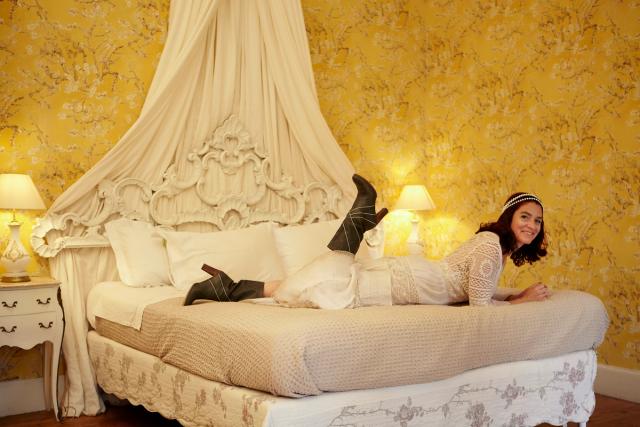
Miel’s bathroom, which overlooks the lake through an 1871 flower-painted window by the artist Henri Gesthas, is a stunning example of how well the house blurs the lines between indoors and nature. Its turquoise tiles—original but repurposed—conjure a feeling of floating on water.
The north-facing Etoile, which Ruby calls the most romantic room, overlooks the garden with green wallpaper that echoes the view. Opium, inspired by the rich greens and browns of its surroundings, borrows design cues from a former linen cupboard-turned-bathroom that reminded her of the Orient Express, she explains.
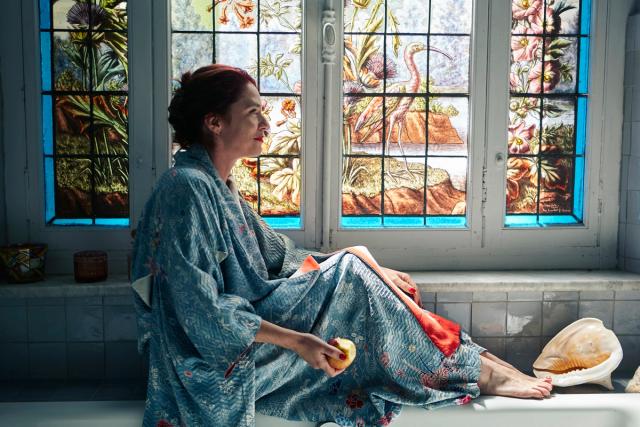

The house made one decision for them: the salon’s color. “It was the only color dictated to us,” Rubs says. During renovations, they uncovered a hand-painted frieze from 1912 hidden beneath 1970s wallpaper. A restoration specialist brought it back to its original “greeny turquoise,” now echoed on the walls and complemented by bold orange velvet furniture.
The garage even got a colorful makeover in the form of a ceiling mosaic, created from pages torn from vintage magazines they’d unearthed in the attic—some dating back to 1812. Its red, blue, and white palette represents Ruby, Dimitri’s Greek heritage, and peace and innocence, respectively.

Ruby’s approach to color is as intentional as it is intuitive, she says: deliberate choices that reflect the spirit of the space rather than trends. She recalls once reading in Elle Decor that painting a room white makes the space feel larger, resulting in a surge of white homes. “But you don’t always want to make a space bigger, or for a stranger to imagine himself there,” she says. “You should let the building and the place itself come alive and sing, and color is one of the best expressions for that.”
Outside, the secret garden envelops visitors in a tapestry of green in “every shade you can imagine,” that’s threaded with subtle splashes of color: white and purple cutting flowers, a border of lavender, and red roses for making essential oils. Over at the lake, they revived an old bridge that had been left to rot under a fallen tree. “We scraped back the color to find the original and repainted it,” Ruby said. “When it was done, we were like, ‘It looks just like Monet’s bridge!’”
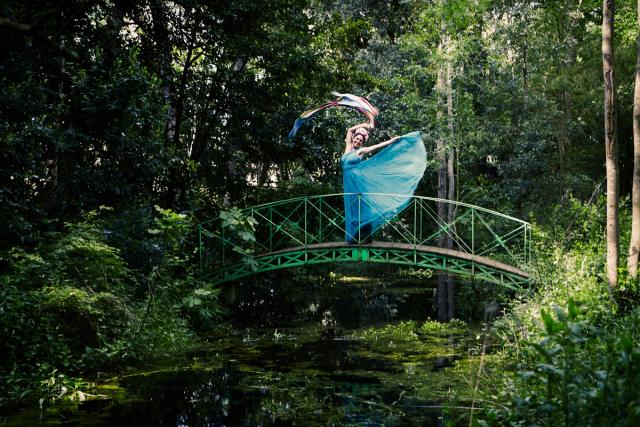
And what better backdrop than a nod to Monet for the La Belle Eco’s artist residences? Still the in the early phases of planning, the idea is to “explore the intersection between art and eco-living, and our connection to nature,” Ruby explains. “And how artists can explore and express the changes we need to make in society to build a better world.”
Also on the horizon: retreats and workshops, including classes for children to learn how to mend, alter, and upcycle their clothing. “The disposable attitude toward clothes is a big problem,” Ruby laments. “I mean it’s our problem with everything, and this circularity is what we’re trying to look at at Le Belle Eco.”
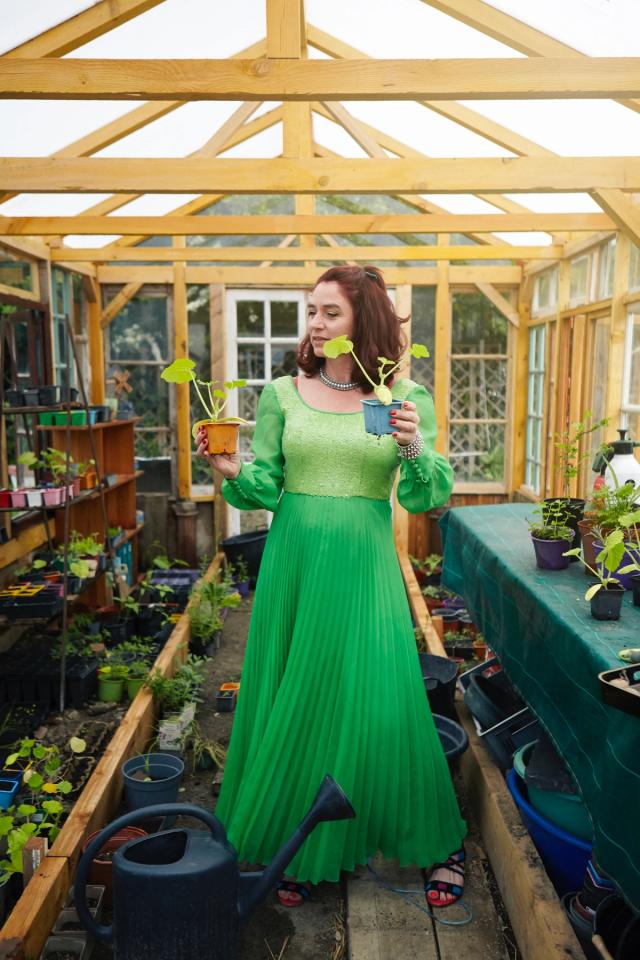
A plastic-for-pay system for the classes will create a circular economy through plastic recycling. Color, of course, beams at the core: “A lot of sustainability can be drab,” she admits. “Nature is abundant, colorful, and vibrant, and a bit of color in a sustainability movement is to be celebrated.”
Whether through workshops, retreats, design, or tending to nature, Ruby infuses all her pursuits with character, creativity, and care—and tops it all off with her signature sparkle.
